View of the iconic Caryatids at the Erechtheion Temple on the Acropolis, Athens, Greece; Photo Credit: Olivia Midgley
Back Onboard Brilliance of the Seas…
Not convinced cruising is for you? Let me try to change your mind in this post. Read about the first part of our Mediterranean cruise in this post.
When I left you last time, we were somewhere between Civitavecchia, Italy and Athens, Greece. We had already seen such wonders as the the Sagrada Familia, the Colosseum, and the Leaning Tower of Pisa. After soaking up Rome’s eternal charm, we set our sights on Athens—because why settle for one ancient capital when you can have two in the same trip? From emperors to philosophers, let’s go!
We had two full sea days between these ports to recuperate. We slept in, had lots of pool time, and lots of Indian food! We actually got the photo package this time. It made sense, because we had two families in one stateroom, so we could share the expense.
A word about cruise excursions
Cruise lines let you know up front that they will not wait for you. The only way they guarantee you will get back on the ship is if you take one of their excursions. They usually have good ones, and if that makes you feel more comfortable, go for it. You can expect to pay more, have a larger group, and have limited options.
Many tour providers will offer their own guarantee- if you miss the ship, they will get you to your next port. Viator and Tours by Locals have some tours that have a “return to ship” guarantee. Shore Excursions Group has guarantees for all its excursions. Or, you can find your own outfitter like I did for this trip. Not only did we save so much money doing this, but we had flexible, private tours. I always ask to be back at the ship 2 hours before departure, just because that is who I am…
With that said, many Caribbean ports are right in town or right by taxi stands or bus stops. It is super easy to explore these ports on your own. But, when touring abroad, I highly recommend setting up a tour (or taking a ship excursion). Many of these ports are 2+ hours from places of interest (Civitavecchia is the port for Rome and it is a 2 hour drive, Piraeus is 30 minutes from Athens, Bangkok is at least 2-3 hours from the port). These ports are usually intense and have lots to see. Having a guide or tour maximizes your time in port and allows you to see, do, and learn so much more than wandering on your own.
With all that said, they will leave you. I’ve seen it happen. Be back on time!
Athens, Greece
I booked this tour with a tour company I found online, and they were absolutely fantastic. PK Travel took great care of us- so much so that we used them again the next time we were in Greece. Our guide, Kristina, and our driver, Paul, were waiting for us at the port of Piraeus, which is about a 30 minute drive from Athens.
*Insider tip: When possible, book tours that have drivers AND guides. This way, your guide can talk to you and focus on guiding rather than driving. Also, the driver can drop all of you off and then find a parking place. If your driver and guide are one and the same, you may have to endure finding parking with them.
Acropolis
We headed straight to the acropolis. It was hot, and lines form fast. If you can’t make it by around 8 am, wait until the evening. Not only will you avoid the bulk of the crowds, but lighting for photos will be better. Our driver dropped us off and we had skip the line tickets, but you can visit on your own.
Wear comfortable, grippy shoes. Take water, sunscreen, and a hat. Much of the walk is unshaded and it is no joke. It only takes 15-30 minutes if you walk at a steady pace, but it’s rocky and uneven in spots and it can get hot. Take the metro (line 2) to Acropolis Station. It is on beautiful Dionysiou Areopagitou Street. This beautiful marble-paved walkway winds through trees and past street musicians, taking you right to the entrance. Don’t linger too long- you want to get in early. You can explore this area later.
*Insider Tip: Buy your tickets online ahead of time to avoid the lines. Below is what I think is the best way to visit the Acropolis and associated sites when traveling on your own.
1. Arrive Early at the West Entrance (Main Gate)
-
Be there right at opening (8:00 AM).
-
Enter through the Propylaea Gate for a dramatic first impression.
-
Advantage: you’ll reach the Parthenon before tour groups flood in.
2. Explore the Acropolis Summit
-
Walk counterclockwise for smooth flow:
-
Parthenon – enjoy the quiet while it’s still uncrowded.
-
Erechtheion & Caryatids – capture photos before lines form.
-
Temple of Athena Nike – overlooks the entrance.
-
Panoramic viewpoints – take your time; morning light is soft and beautiful.
-
3. Descend via the South Slope
-
Walk down past:
-
Theatre of Dionysus
-
Odeon of Herodes Atticus
-
Sanctuary of Asclepius
-
-
This route lets you see the slopes at a leisurely pace after the summit.
4. Visit the Acropolis Museum (Late Morning)
-
By now, the sun is hotter, so it’s perfect timing to go indoors.
-
Spend 1–1.5 hours exploring the galleries.
-
Don’t miss the Caryatids Hall and the Parthenon Gallery (with 360° glass views of the Acropolis above you)
5. Stroll Along Dionysiou Areopagitou Street
-
Once you exit the museum, enjoy this shaded pedestrian walkway.
-
Stop for a coffee or snack at one of the cafés.
6. End in Plaka (Early Afternoon)
-
Wander through Plaka’s narrow streets.
-
Perfect for lunch in a shaded taverna.
-
Optional: explore the Ancient Agora or climb Areopagus Hill for a last city view.
⏱️ Timing Suggestion
-
Acropolis (summit): 8:00 – 9:30 AM
-
South Slope descent: 9:30 – 10:00 AM
-
Museum: 10:15 – 11:45 AM
-
Plaka & lunch: 12:00 PM onward
-
If you are on a cruise excursion, you won’t have as much control. BUT, hopefully you will have a guide! Having a guide on cruise excursions is great for so many reasons. See my sales pitch in the first section!
The Acropolis is actually the hill, and essentially means “highest point in the city.” At the top of the Acropolis was a religious and cultural area, with the following monuments:
-
The Parthenon – The large temple dedicated to Athena Parthenos, protector of Athens. It’s the most iconic building of the Acropolis.
-
The Propylaea – The monumental gateway that serves as the grand entrance to the Acropolis.
-
The Erechtheion – An unusual, sacred temple dedicated to both Athena and Poseidon. It’s famous for the Porch of the Caryatids, where six sculpted women act as columns. This was probably my personal favorite.
-
The Temple of Athena Nike – A small Ionic temple near the Propylaea, celebrating Athena as the goddess of victory.
Other features you’ll see on your walk:
-
The Theatre of Dionysus (on the south slope, just below the plateau) – the birthplace of Greek tragedy and comedy.
-
The Odeon of Herodes Atticus (also on the south slope) – a Roman-era stone theatre still used for performances today.
-
Altars, shrines, and statues – including a colossal bronze statue of Athena (in antiquity), smaller sanctuaries, and victory monuments.
You’ll see some of the best views in the city (Not the best to me, because you won’t see the acropolis since you are on top of it 🙂 )
Temple of Zeus
If you’re exploring Athens beyond the Acropolis, don’t miss the Temple of Olympian Zeus, known as the Olympieion. Even though only 15 columns are still standing, they’re absolutely massive—17 meters tall—and give you a sense of how enormous this temple once was. It started back in the 6th century BC but wasn’t finished until the Roman emperor Hadrian came along almost 700 years later, so the site is a mix of Greek ambition and Roman grandeur.
The temple was dedicated to Zeus, king of the gods, but also doubled as a monument to Hadrian himself, who had a soft spot for Athens. Today, it’s an easy walk from the Acropolis, right by Hadrian’s Arch, and it’s especially striking at sunset when the marble glows. It’s not as crowded as other sites, so take your time wandering and imagining what it looked like in its prime.
Parliament Building/Changing of the Guards
All Greek males have to serve for one year in the military, but only a select few serve as “Evzones.” This is the name of the guards you see outside of the Hellenic Parliament in Syntagma square, and they are an elite ceremonial unit of the Presidential Guard, chosen from among the tallest and strongest conscripts doing their mandatory military service. Their traditional outfit includes the fustanella (a pleated white kilt with 400 folds, symbolizing years of Ottoman occupation), red cap with a long tassel, white stockings, and the famous tsarouchia shoes with pompons.
Their movements are something to behold. First of all, they cannot make any extra movements- only blinking is allowed. Their movements are perfectly synchronized, stylized marches. These guys are so stoic… during the economic crisis and protests in the square, the guard shacks were set on fire. One guard continued to stand, even as his uniform caught fire, until the “dismiss” order was given.
The Plaka
We loved the Plaka. There were bustling streets packed with people speaking all different languages. There were touristy junk shops, but the overall feeling was of a center of activity where everyone gathers to socialize, eat, and drink.
We had lunch at a wonderful little shop with a jovial owner who kept referring to himself as “John Travolta” and to my husband as “Jackie Chan.” The pork souvlaki and gyros were flavorful and tender. Don’t miss the Plaka, and tell “John” we said hi.
New Acropolis Museum
Don’t miss the New Acropolis Museum, and allow plenty of time for it! It is very cool. The museum is massive, with clean, modern lines and tons of natural light. Many of the floors are clear so you can see the excavated artifacts in situ underneath. There are ruins everywhere in Athens! If you are building a house and find artifacts, construction ceases immediately until the area is cleared by archaeologists.
See the museum with a guide! Kristina made the statues come to life with her stories that incorporated history and mythology, and it was fascinating.
Kusadasi, Turkiye
This port is actually located right in Kusadasi town. It is super cute and has lots of nice restaurants and… ice cream shops! If you haven’t tried Turkish ice cream, this should be on your to-eat list. There are also decent beaches. You could have a perfectly nice day here without a tour.
With that said, Ephesus is the major draw for this port, and you really shouldn’t miss it. From the Ephesus Travel Guide website: Ephesus, was one of the 4 major cities of the Roman Empire having a population over 200.000 people. Selected as the capital of the Asia Province of the Roman Empire by the nephew of Julius Caesar known as Augustus, named as Octavius. Served as a capital till Constantine ordered the expansion of another city located 400 miles north of Ephesus. He named this city as Constantinopolis and selected this city as the new capital. Ephesus today, considered as one of the most well-preserved ancient cities of the world.
If you are Christian or interested in Biblical sites and history, you really cannot miss Ephesus. Hello, Ephesians!! This is where the Apostle Paul began, and you can see the amphitheater where he addressed the people. Several sites mentioned in Acts are still here:
-
Directly mentioned: Synagogue, School of Tyrannus, Theatre.
-
Strongly implied/contextual: Temple of Artemis, Harbor/Agora.
If the tour provider in Athens was great, this tour provider was spectacular! Contact Ephesus Travel Guide for the best possible experience at this port! For around $500 for the entire day for 6 of us, Taner and Captain Ismael picked us up at the port in a plush, air-conditioned bus that seated around 10 and had wifi. If Taner is available, request him!
This was our first time in Türkiye, and we loved it! The people were so warm and friendly and the country was beautiful. We’ve only scratched the surface and will visit again and again!
House of Virgin Mary
Perched on the slopes of Mt. Koressos near Ephesus in modern-day Türkiye, the House of the Virgin Mary is a remarkable pilgrimage site revered by both Christians and Muslims. Tradition holds that after the crucifixion of Jesus, the Apostle John and Mary Magdalene brought Mary to Ephesus, where she spent her final years. Rediscovered in the 19th century following the visions of a German nun, the modest stone house has since become a sacred destination, visited by Popes and pilgrims alike.
For Catholics, it is honored as the place of Mary’s Assumption, while Muslims venerate her as the mother of the Prophet Isa (Jesus). Visitors come not only for its spiritual atmosphere but also for the “wishing wall” filled with prayers and the spring believed to have healing properties. More than just a historical site, the House of the Virgin Mary stands as a rare symbol of unity, drawing people of different faiths together in reverence for one of history’s most beloved figures.
The lines to enter were long, and we were on a limited time schedule. So, we looked around, got some healing water, and moved on.
Ephesus
You have to experience this place to truly understand. It truly is well-preserved, and it is easy to imagine living here-wearing your long robes and sandals. From bath houses to wash your dirty self before entering this capital of Asia Minor, to the ancient library, communal toilets, and statues of Artemis, the goddess of fertility, there is so much to take in.
Wandering through Ephesus feels like stepping straight into an ancient time capsule. Once one of the great cities of the Roman world, it’s now an open-air museum where marble streets, towering columns, and intricate mosaics tell stories that are thousands of years old. The highlight for most visitors is the Library of Celsus, with its grand façade that still looks stunning against the blue Aegean sky.
Visiting the Great Theatre of Ephesus is like stepping onto the stage of history itself. Beyond its impressive size—able to hold around 25,000 spectators—it’s famous for a dramatic moment in early Christian history. According to the Bible (Acts 19:23–41), this was the spot where the Apostle Paul’s preaching stirred up a huge uproar among local silversmiths, whose business making shrines of the goddess Artemis was threatened by his message. Tens of thousands of people packed the theatre, shouting and protesting, until city officials finally restored order. Standing there today, it’s easy to imagine the echoes of ancient voices and the tension of that historic confrontation—a reminder that these ruins were once alive with not just entertainment, but ideas, debates, and moments that shaped history.
As you stroll past temples, fountains, and crumbling villas, it’s hard not to picture the city bustling with merchants, philosophers, and travelers from all corners of the empire.
The same travel tips apply here that we discussed for the Acropolis- comfy, sturdy shoes, sunscreen, a hat, and water. If you are visiting on your own, early morning or early evening (the golden hour) are the best times to visit.
Temple of Artemis
The Temple of Artemis in Ephesus, once one of the Seven Wonders of the Ancient World, was a spectacular testament to ancient architecture and devotion. Though only a single column remains today, the site hints at the temple’s former grandeur, with its massive size, ornate decorations, and status as a major center of worship for the goddess Artemis. Visiting the ruins, you can almost imagine pilgrims from across the ancient world coming to honor her, making it a fascinating stop for history buffs and travelers interested in the spiritual and cultural life of Ephesus.
We stopped by and took pix in the parking lot, but you can buy tickets ahead of time and see the place close up.
We finished our tour with an authentic Turkish lunch and a little shopping.
Kusadasi
Don’t miss this cute little town. Have a snack, do a little shopping, or… have some ice cream!
Turkish ice cream, or dondurma, is a treat that’s as much about the experience as the flavor. Unlike regular ice cream, it’s thick, stretchy, and slightly chewy thanks to two special ingredients: salep (a flour made from orchid root) and mastic (a natural resin). Street vendors often turn serving it into a playful performance, twisting and stretching the ice cream on a long-handled paddle before finally handing it to you—sometimes pulling it away just as you try to grab it! Beyond the fun, dondurma is deliciously rich and creamy, and trying it is a must when wandering the markets or streets of Turkey. We had our first one outside of Ephesus, and our second one at Mado in Kusadasi.
- Grand Theatre at Ephesus
- Library at Ephesus
- St. Mary’s House
- Ephesus
- Too Cute Not to Share, Ephesus
- Crowds at Ephesus
Come back next time as we sail back to Greece! Santorini sunsets, Malta magic, and a Parisian goodbye. The grand finale of our Mediterranean journey!
If you liked my post or found it helpful, please subscribe to my email and follow me on facebook and instagram!

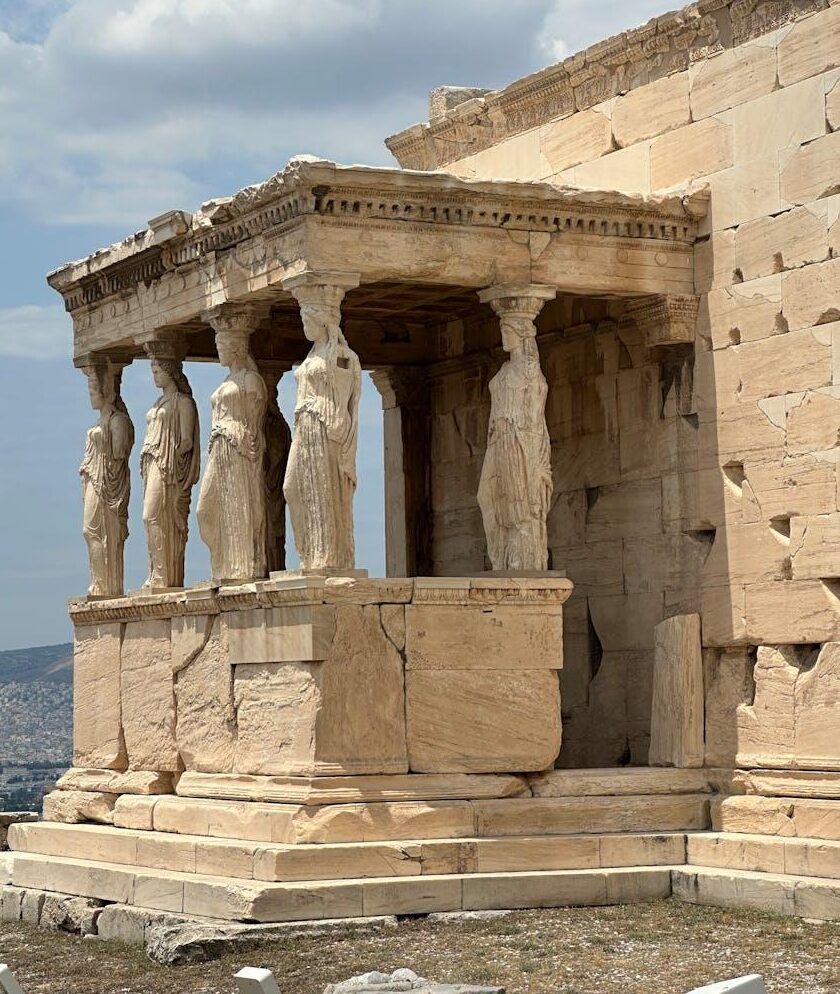
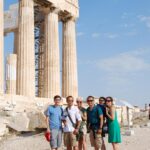
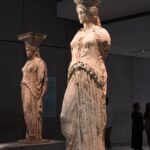
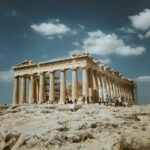
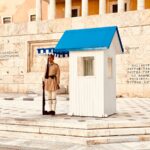
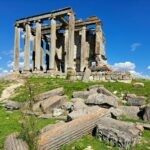
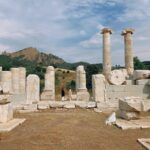
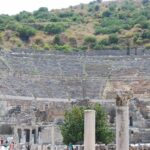
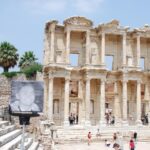
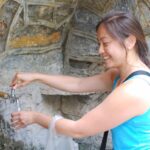
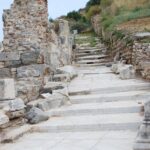

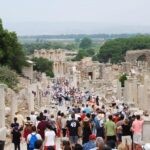
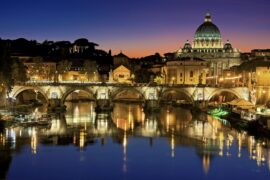
0 Comments